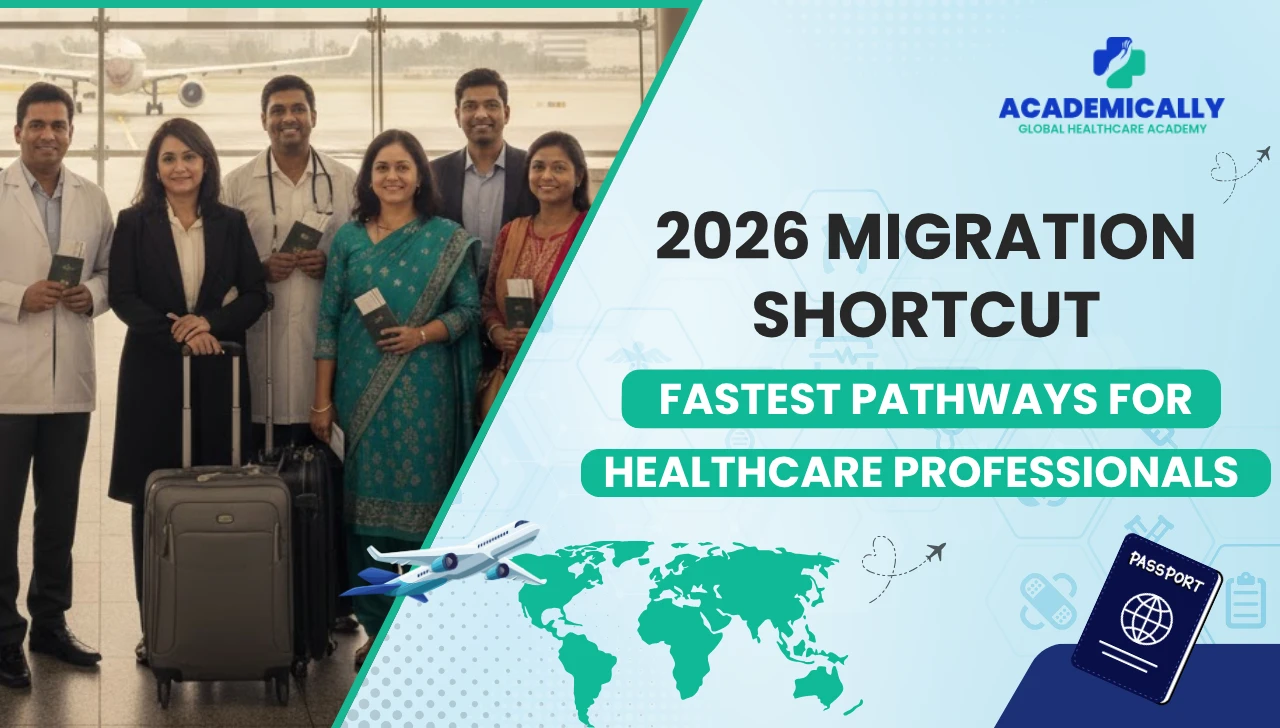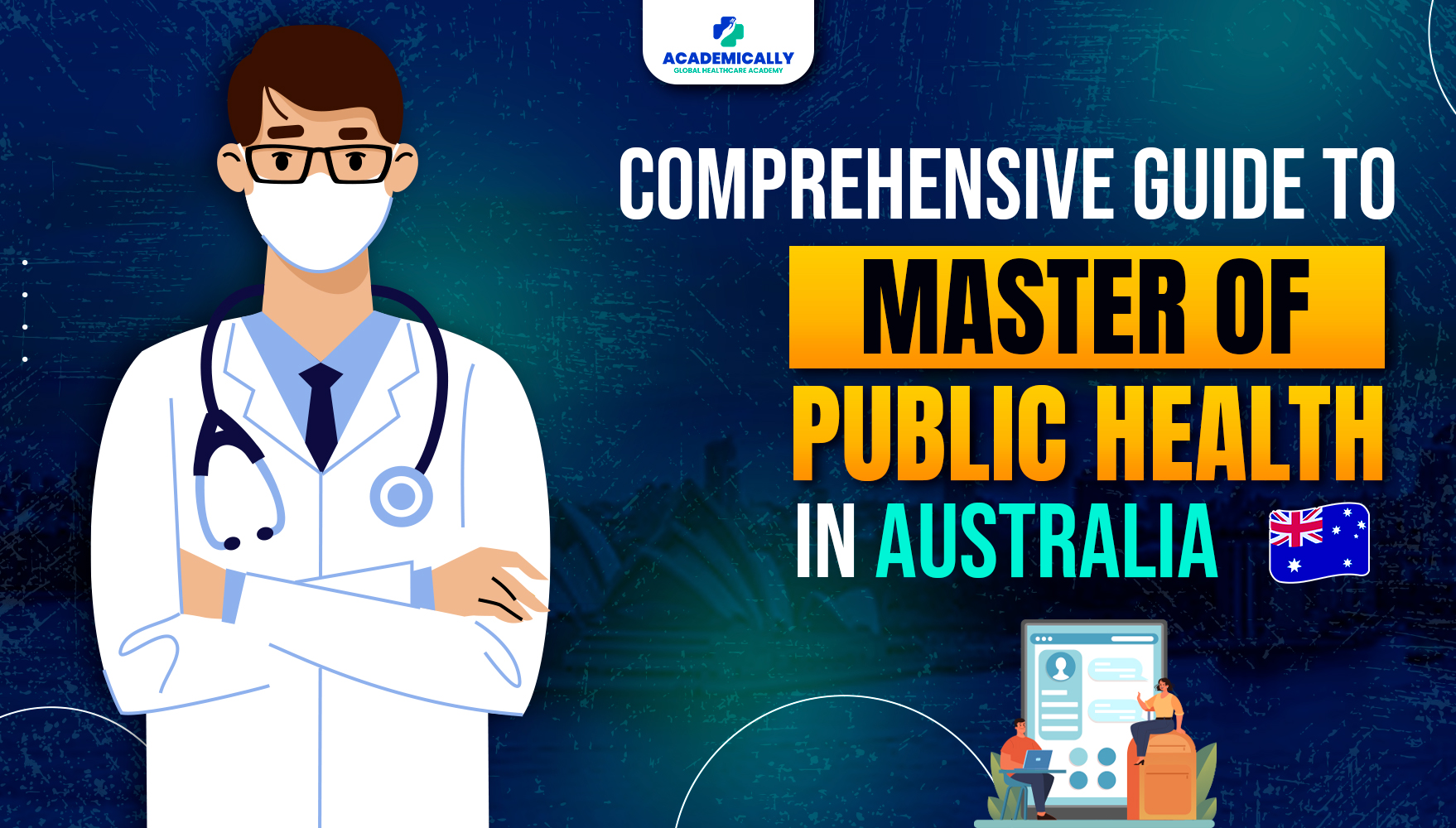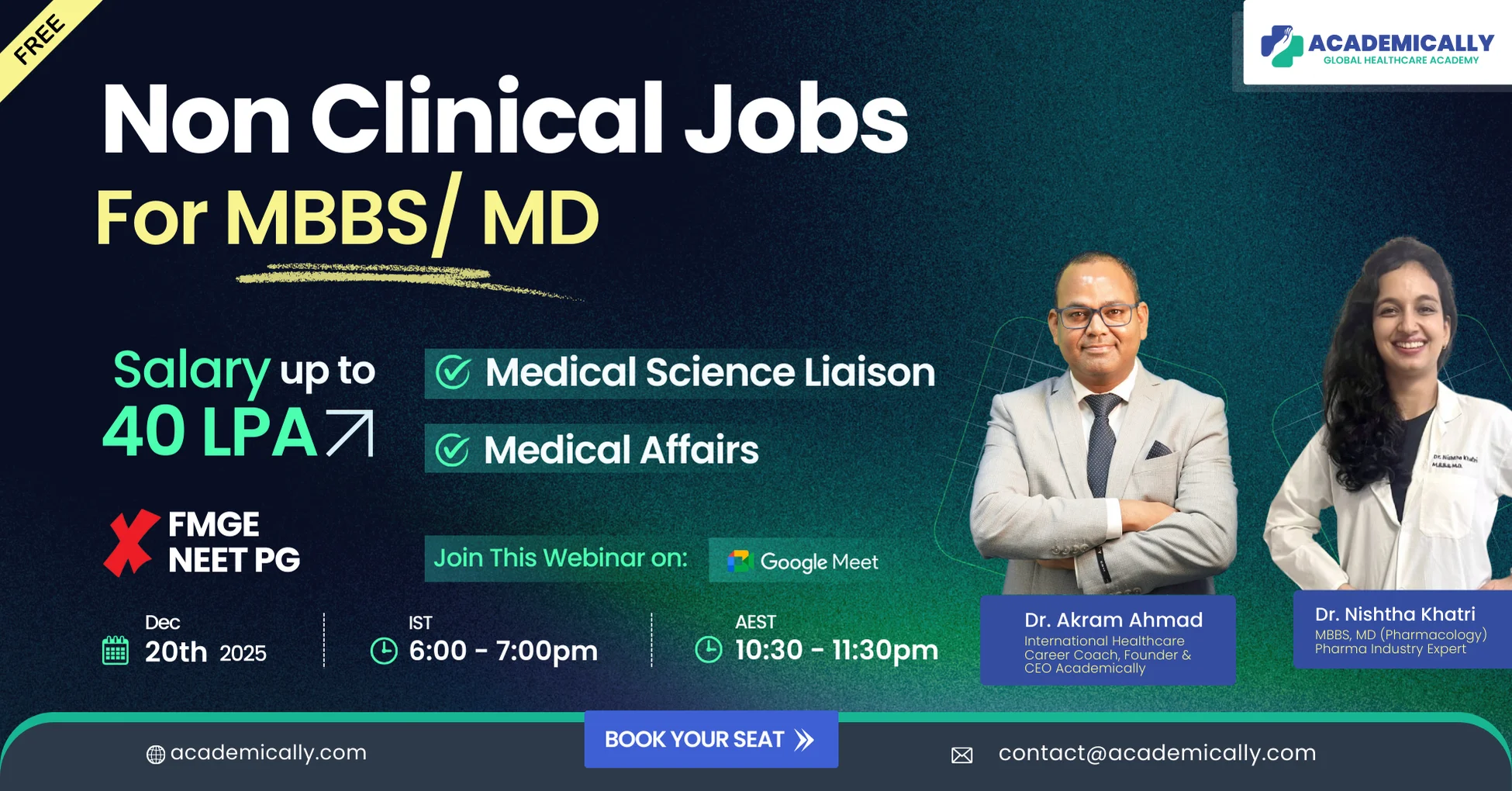Did you know.. In 2026, the countries that are facing critical shortages of healthcare professionals (doctors, pharmacists, physiotherapists, and caregivers, etc.) are offering fast-track migration pathways. They might sound a bit off, but they are actually official priority visas and recognition systems that focus on reducing wait times, lowering costs, and bringing healthcare professionals into their healthcare system faster than ever before.
In this blog, we will discuss why migration shortcuts matter, which countries offer faster routes, how to apply, what eligibility looks like, and what to expect once you arrive. And in 2026, when you’re planning to go abroad, we will cover the roadmaps for the quickest and smartest migration pathways.
Let’s start.
Why migration shortcuts matter for healthcare professionals in 2026
Global shortage and high demand for healthcare workers
There will be a shortage of 10 million healthcare workers in 2030, according to the WHO. In many countries like the UK, Australia, Canada, and Germany, there is a limited number of staff, and they are on the verge of crisis, prompting governments to fast-track foreign-trained professionals.
Why standard routes are often slow, expensive, or uncertain
The traditional migration routes can take 12-24 months easily, and they require an extensive documentation process and involve a costly procedure. This delay might cost career opportunities and financial strain.
What “shortcut” really means: fast tracks, priority visas, tech-enabled processes
A migration “shortcut” refers to:
- Priority visa processing (weeks instead of years)
- Reduced fees and surcharges
- Relaxed experience requirements
- Employer-sponsored pathways
- Use of digital credentialing and tech-enabled verification
Top destination countries offering fast-track routes for healthcare professionals
United Kingdom: Health & Care Worker visa, fast-track processing, reduced fees
The UK offers one of the fastest visas for healthcare workers, with approvals in 3 - 8 weeks. Visa fees are halved, and applicants are exempt from the health surcharge. A job offer from the NHS or an approved care employer is mandatory.
Australia: AHPRA fast-track for overseas nurses & skilled migration streams
Australia’s AHPRA fast-track system helps nurses and allied health workers complete recognition quickly. Combined with the Skilled Migration Program, applicants can transition to permanent residency in under a year.
Canada: Express Entry & priority draws for essential care/health occupations
Canada conducts Express Entry healthcare-specific draws, inviting candidates with lower CRS scores. Applicants with credential assessments and language test results can get PR within 6 - 8 months.
Germany: Skilled Immigration Act, fast equivalence, bilateral recruitment agreements
Germany has signed bilateral agreements with India and the Philippines to recruit nurses quickly. With the Skilled Immigration Act, healthcare workers can work while completing recognition and secure permanent residency in 5 years.
Other notable ones (Ireland, New Zealand, Singapore, etc.)
- Ireland: Critical Skills Permit for nurses/doctors.
- New Zealand: Green List visa for doctors and nurses with “Straight to Residence” status.
- Singapore: Employer-sponsored fast approvals in hospitals.
Quick comparison table: processing times, eligibility, costs
Country | Route | Processing Time | Key Requirement | PR Pathway |
UK | Health & Care Worker visa | 3–8 weeks | NHS/care job offer | 5 years |
Australia | Skilled Migration + AHPRA | 4–6 months | ANMAC/AHPRA + English | Yes |
Canada | Express Entry Healthcare Draw | 3–6 months | ECA + IELTS/CELPIP | Yes |
Germany | Skilled Immigration Act | 2–5 months | German B1/B2 + job offer | Yes |
New Zealand | Green List visa | 1–3 months | Job offer | Yes |
Understanding the fast-track/priority routes
What makes a route “fast” (priority processing, lower documentation, fewer quotas)
Speed is achieved by giving healthcare workers priority lanes, fewer documentation requirements, and bypassing regular quotas.
Healthcare-specific routes (e.g., “Health & Care Worker visa UK”, “Essential skills draw in Canada”)
These visas exist solely to attract healthcare workers, offering special benefits like fee reductions or PR pathways.
Employer-sponsored vs independent / points-based fast tracks
- Employer-sponsored: UK, Germany, Singapore.
- Independent / points-based: Canada, Australia.
Temporary vs permanent migration, how long to permanent status
Countries like Canada and New Zealand offer immediate Permanent Residency(PR), while other countries like the UK, Germany, and Australia require 3-5 years of work experience for PR.
Eligibility criteria for fast-track migration: for healthcare professionals
- Professional qualification: Undergraduate degree or equivalent in healthcare.
- Licensing & registration: Approval from regulatory bodies (e.g., NMC UK, AHPRA Australia, NMC Canada).
- Language proficiency: IELTS/OET for English; some countries have specific language requirements.
- Work experience: Nurses: 1–2 years; doctors/specialists may need more.
- Minimum salary/job offer: Mandatory sponsorship in the UK, Germany, and New Zealand.
- Health, criminal & background checks: Medical clearance and police certificates required.
- Fast-track boosters: Rural/underserved area commitments can reduce wait times and increase approval chances.
How to apply as an international healthcare professional: step-by-step process
Step | Action | Details |
Step 1 | Check eligibility & research destination | Match your profile (degree, language, experience) to the fastest possible country. |
Step 2 | Credential assessment/equivalence/registration | Submit degrees and licenses to designated authorities (e.g., NMC UK, AHPRA Australia, NMC Canada). |
Step 3 | Secure a job offer or pre-registration (if required) | NHS, Canadian hospitals, or German recruiters often conduct remote interviews. |
Step 4 | Gather required documents | Keep notarized and translated copies of education, references, licenses, and language scores ready. |
Step 5 | Submit visa/migration application | Apply online through the healthcare-specific fast-track route. |
Step 6 | Wait, follow up, respond to queries | Ensure timely responses to avoid delays in processing. |
Step 7 | Arrival, onboarding, bridging training | Some countries require supervised practice or bridging courses before full licensing. |
Common pitfalls and how to avoid delays
- Incomplete credential recognition
- Language test failures or retakes
- Non-compliant employer sponsorship
- Missing notarized translations
- Health/background clearance delays
- Overlooking regional/state-specific rules
Timeline and cost estimates (2026 projections)
Country | Processing Time | Cost (USD) | Cost (INR approx.) |
UK | 3–8 weeks | $2,000–3,000 | ₹166,000–₹249,000 |
Australia | 4–6 months | $3,500–5,000 | ₹290,500–₹415,000 |
Canada | 3–6 months | $2,500–4,000 | ₹207,500–₹332,000 |
Germany | 2–5 months | $2,000–3,500 | ₹166,000–₹290,500 |
Hidden Costs | Varies | $1,000–5,000 | ₹83,000–₹415,000 |
Tips to fast-track your application further
- Get credential equivalence early
- Translate/notarize documents in advance
- Choose underserved regions for bonus points
- Track policy updates regularly
- Use consultants cautiously, only if reputable
What to expect upon arrival / settling in professionally
- Induction & Supervised Practice – Some countries require observation periods.
- Maintaining Licensure – CPD credits are mandatory.
- Path to PR / Citizenship – 3–5 years (except Canada, NZ).
- Family & Support – Dependents are usually included in fast-track visas.
Final thoughts & choosing your migration shortcut wisely
The healthcare migration in 2026 is faster and more accessible than ever. You can choose the best route based on your qualifications, language skills, and career goals, with the promise of long-term career stability.
We at Academically do the research, prepare you early, and help you choose wisely, the migration shortcut you should pick to define your entire global career path.




